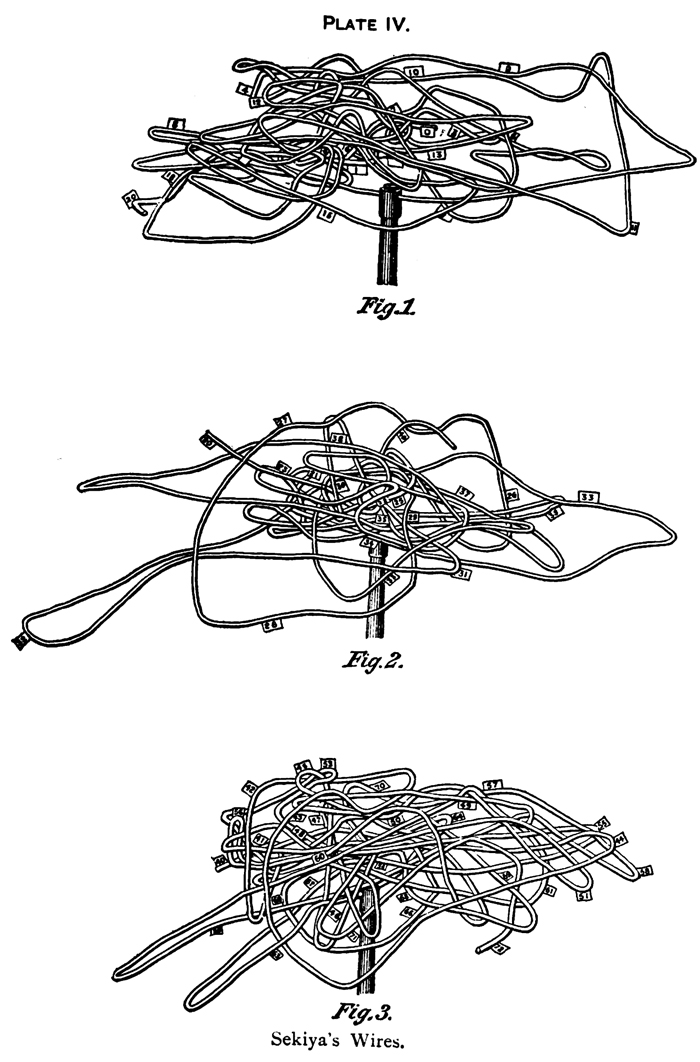Sekiya’s Wires

*
Plate IV. Sekiya’s Wires
Clarence Edward Dutton, Earthquakes in the light of the new seismology (1904)
The composition of these three co-ordinates [ x, y and z ] so as to give the resulting path of a point on the ground has been effected by the late Professor Sekiya, of the University of Tokio. The path is represented by a wire bent in such a manner as to correspond with it upon an enlarged scale. It is shown in three parts in Plate III IV… The first of the three shows the path during the first twenty seconds of an earthquake occuring in Japan on January 15, 1887. The second shows the path from the twentieth to the fortieth second, and the third from the fortieth to the seventy-second second, at which time the vertical movement became inappreciable, though the horizontal vibrations continued considerably longer. ( p 94 )
—
Clarence Edward Dutton ( 1841-1912 *; geologist (field and theoretical), proposed the term (but did not originate the idea of) isostasy ). The present volume surveys the instrumentation supporting the new seismology.
A nicer representation of Sekiya’s Wires is found in J. W. Powell and C. E. Dutton, Ninth annual report of the United States Geological Survey to the Secretary of the Interior: 1887-’88 (1889) here.
wikipedia on Sekiya Seikei (1855-1896)
3 March 2013
tags: drawing; isostasy; knots; lines; seismology; wire
Clarence Edward Dutton; Sekiya Seikei